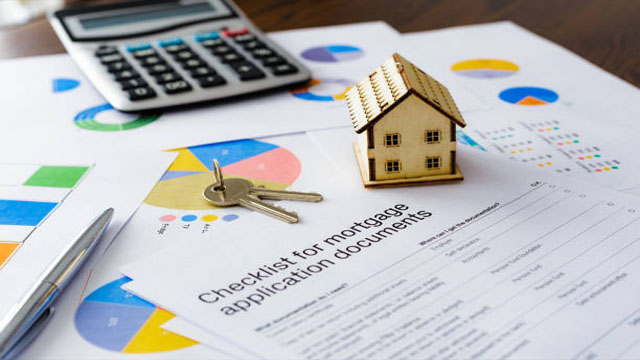Author: Yml Yml
Navigating the Waters of Tax Audits: The Benefits of Tax Audit Insurance for Taxpayers

In the complex world of taxation, the prospect of an audit can be daunting for any taxpayer, whether you're an individual, a small business owner, or the CEO of a large corporation. Tax audits are not only stressful but can also be expensive, time-consuming, and disruptive to your daily operations or personal life. This is where tax audit insurance becomes not just a safety net but a strategic tool in managing financial risks.
Here is why purchasing tax audit insurance could be a wise decision for taxpayers.
Financial Protection
The primary benefit of tax audit insurance is financial protection. Audits can result in significant professional fees as taxpayers seek assistance from accountants, tax agents, and even legal counsel to navigate the audit process. Tax audit insurance covers these costs, ensuring that you are not out of pocket for these unforeseen expenses. This can include the cost of preparing documents, hours of advisory services, and any other professional fees incurred during the audit.
Peace of Mind
Tax audits can be stressful, with the potential to disrupt both your business operations and personal peace of mind. Knowing that you have tax audit insurance can alleviate this stress, allowing you to focus on running your business or managing your personal affairs without the added worry of potential audit costs. This sense of security is invaluable, providing comfort in knowing that you're prepared for whatever the tax office may bring your way.
Time Savings
Handling a tax audit can be incredibly time-consuming. For businesses, this time could be better spent on growth activities or operations. Tax audit insurance often provides access
to experts who can manage the audit process on your behalf, saving you precious time. These professionals are well-versed in audit procedures and can efficiently navigate the complexities of your case, minimizing the disruption to your daily activities.
Flexibility and Control
Finally, tax audit insurance provides taxpayers with flexibility and control over how to handle an audit. Instead of being limited by financial constraints, policyholders can engage the best possible experts to represent their interests. This level of control can be crucial in effectively managing and swiftly resolving an audit with minimal financial impact.
Purchasing Tax Audit Insurance
If you're considering acquiring audit insurance for yourself or your business, you have the option to select from preferred service providers or use our recommended provider, BizCover by link below: https://www.bizcover.com.au/tax-audit-insurance/?utm_source=0012V00002X0IDLAAR&utm_medium=0012V00002X0IDLAAR&utm_id=0012V00002X0IDLAAR .
Should you need further assistance or wish to explore your options, please don't hesitate to contact us at 02 8383 4400.
Is your bank offering you the best interest rate?

Our lenders are sharpening their interest rates, currently 6.14% PA on home loans and 6.29% PA on investment loans, both principal and interest repayments.
Rates are based on Loan to Value Ratio (LVR), so reach out to us NOW.
Learn more about how we can help you by calling us on (02) 8383 4466 and requesting a callback or making an appointment with the YML Finance Team.
How can YML help?
Talk to our YML Finance Team today to see how YML Group can assist you with your loans. For more for more information, view our website and contact us on (02) 8383 4466 or by using our Contact Us page on our website.
Landholder Duty – Changes to the Ownership Percentage Threshold

Landholder duty (formerly stamp duty) in NSW changed under the Treasury and Revenue Legislation Amendment Bill 2023 (NSW) which passed on 21 September 2023. The changes to landholder duty affect both private unit trusts and wholesale unit trusts, effective 1 February 2024.
Landholder duty is charged on NSW land purchased with an unencumbered value of $2 million or more, held by private entities and private unit trusts
From 1 February 2024 the landholder duty ‘significant interest’ threshold for private unit trusts was reduced from 50 percent to 20 percent – thus, land transactions of 20 percent or more to private landholders under a private unit trust scheme will be subjected to landholder duty.
Investors, including self-managed superannuation funds (SMSFs), will also be required to pay landholder duty when they acquire a 20 percent or more ‘significant interest’ in a private unit trust.
Private companies will continue to have a 50 percent threshold before landholder duty is applied.
Public landholders will continue to have a 90 percent threshold before landholder duty is applied.
What option is available to increase the threshold?
Under transitional provisions within the Treasury and Revenue Legislation Amendment Bill 2023 (NSW), from 1 February 2025, a private unit trust scheme may apply to register as a wholesale unit trust – whereby the landholder duty ‘significant interest’ threshold is restored back to 50 percent.
Applications for registration as a wholesale unit trust must be made prior to 1 May 2024 and be approved for NSW land acquisitions made on or after 1 February 2024 to qualify for the 50 percent landholder duty threshold applicable to wholesale unit trusts.
Qualifying criteria to register as a wholesale unit trust must be met by private unit trusts applying for wholesale unit trust registration, two key criteria being:
- The trust scheme is not established for a particular investor; and
- Not less than 80 percent of units in the scheme are held by ‘qualified investors’ (such as listed entities)
Next Steps
It would be prudent for investors who acquire NSW land to check the unencumbered value and whether they are acquiring a ‘significant interest’ to ensure that correct and timely landholder duty is paid from 1 February 2024.
Additionally, private unit trusts might decide to transition to a wholesale unit trust via registration to benefit from a higher ‘significant interest’ threshold next year from 1 February 2025. YML Chartered Accountants can assist those investors with registration before the 1 May 2024 cut-off.
How can YML help?
Talk to our YML Legal Team today to see how YML Group can assist you with your landholder duty obligations. For more information, view our website and contact us on (02) 8383 4400 or by using our Contact Us page on our website.
Land Tax Change – Provisional Primary Residence Exemption

Under the Land Tax Management Act 1956 in NSW, a principal place of residence (PPR) refers to the one place of residence, whether within Australia or overseas, that is purchased by an individual or more than one person, any one or more of whom may occupy the residence and be deemed owners.
In Australia, land tax is a state-based tax. In NSW, land tax is payable on all properties, however some exemptions may apply.
In the case of a principal place of residence, if an owner has less than 25 percent interest in the land and meets certain qualifying criteria, then they may still claim a land tax exemption. This exemption can provide financial relief to individuals who may not own their land outright but still occupy it as their principal place of residence. Furthermore, the PPR land tax exemption, where applicable, may be claimed by any and or all joint owners of a PPR.
Generally, the requirements for this exemption are that you must:
- Claim only one exemption per family
- Have and claim only one principal place of residence (worldwide)
- Have continuously resided in the property prior to the taxation date
- Have used the land only for residential purposes
- Be a natural person and not a company or trust who owns the land
What is a transitional provision?
A transitional provision is often put in place to ease the transition from one set of rules to another. It usually applies for a limited time. An exemption such as the current land tax exemption for owners of a main residence can likely provide temporary financial relief during the transitional provision period.
How might this transitional provision affect you?
If you have a principal place of residence and usually claim a land tax exemption despite having less than a 25 percent interest in the land, then you can continue to claim this exemption for the 2024 and 2025 land tax years. Thereafter, the minimum 25 percent ownership requirement will apply from the 2026 land tax year going forward
Can a ‘foreign person’ also claim the land tax exemption?
Yes, a foreign person may claim the PPR land tax exemption for owning and occupying a PPR, however the surcharge land tax payable by foreign persons is not exempt and will be assessed and subsequently payable by a foreign person on land owned. Furthermore, if a foreign person has a PPR in a foreign country and only one PPR is exempt, further conditions need to be satisfied to claim the PPR exemption in NSW.
How to claim the land tax exemption this year?
Reach out to us at YML Legal and we will assess and review your residential property ownership to determine your qualification for this year’s temporary provisional land tax exemption.
How can YML help?
Talk to our YML Legal Team today to see how YML Group can assist you with your land tax exemptions. For more information, view our website and contact us on (02) 8383 4400 or by using our Contact Us page on our website.
Next 5000 – Private Tax Group – Tax Performance Program

Since 2019 the Australian Taxation Office (ATO) has expanded its tax performance program to review individuals who, with their associates and related entities, control net wealth of more than $50 million, known as Next 5000 groups.
The purpose of the Next 5000 Tax Performance Program is to give confidence to the broader Australian community that the correct amount of taxation is being paid by Australia’s wealthiest privately-owned groups.
Using data matching and analytic models to identify Australian resident individuals who qualify under the Next 5000 program, the ATO focuses on early resolution, where appropriate, correcting tax errors and improving a Next 5000 group’s existing processes to increase tax compliance.
To achieve this goal, the ATO works closely with each of the Next 5000 groups. Through comprehensive risk reviews, the ATO aims to increase ongoing and willing participation in the taxation system by these identified Australian individuals.
The ATO’s findings from their initial streamline assurance reviews show that areas of focus for the ATO are tax governance – documentation and ‘lived’ demonstration of effective oversight of tax processes, tax reporting, identification of tax risks, and timely tax compliance.
Furthermore, it is the ATO’s concern that the Next 5000 groups should seek professional tax advice where appropriate. Where the ATO has found that groups do not have documented processes and procedures, there is resultant misreporting of significant financial events, transactions, and activities.
Some of the common issues the ATO discovered during reviews include:
-
Non-arms’ length arrangements between family members or related parties that are designed to reduce or avoid tax that would otherwise be payable;
-
Incorrect characterisation of property sales;
-
Incorrect use of tax losses and capital losses;
-
Loans or payments to shareholders and their associates not complying with the requirements of Division 7A of the Income Tax Assessment Act 1936.
The ATO applies its ‘justified trust’ methodology to determine that a group has paid correct taxation based on these four principles:
|
Effective Tax Governance – assessing the existence and execution of a tailored approach to tax compliance processes, roles and responsibilities, and post implementation review |
|
|
Tax Risks Flagging – adherence to Practical Compliance Guidelines (PCGs) to identify any risks, as well as heeding Taxpayer Alerts accordingly |
|
|
Significant or New Transactions – current business activities and their tax outcomes are assessed and reviewed, as well as industry-specific issues for a particular taxpayer group |
|
|
Accounting and Tax Differences – understanding the difference between business performance and tax performance based on a review of tax reconciliations and trust distributions |
To prepare for a review by the ATO, consider these four principles and how you might address each one. Ensure you have formal and adequate documentation for your tax governance and tax risk management. Work willingly with the ATO, be open and transparent to the review process to avoid the ATO taking firmer action, such as traditional reviews and audits.
Should you be affected by the latest round of Next 5000 Tax Performance Program reviews, consult with YML Chartered Accountants who can help you with your documented processes and procedures to meet your tax obligations and assure your compliance with ATO rules and regulations.
How can YML help?
Talk to our YML Chartered Accountants Team today to see how YML Group can assist you with your Next 5000 review. For more information, view our website and contact us on (02) 8383 4400 or by using our Contact Us page on our website.
Variable Interest Rate at 6.34% NOW

Lenders are offering investment loans with a 6.34% variable interest rate.
Reach out to us NOW and learn more about how we can help you by calling us on (02) 8383 4466 and requesting a callback or making an appointment with the YML Finance Team.
How can YML help?
Talk to our YML Finance Team today to see how YML Group can assist you with your investment loan. For more for more information, view our website and contact us on (02) 8383 4466 or by using our Contact Us page on our website.
Bring Forward Rule to top up your Superannuation

Receiving superannuation contributions from an employer and making personal concessional (before-tax) contributions to your superannuation fund can be just the start of building a healthy retirement sum. You can further increase your superannuation balance by making non-concessional (after-tax) contributions.
How does this work?
Since 1 July 2021 non-concessional (after-tax) contributions – up to a cap of $110,000 per year over a three-year period – may be made in to your superannuation fund.
The Australian Taxation Office (ATO) caps non-concessional contributions based on your total superannuation balance on 30 June of the previous financial year. This table shows how the Bring Forward rule is applied:
|
Total Superannuation Balance 30 June Prior Year |
Bring Forward Years / Total Contribution |
|
Less than $1.68 million |
3 Years / $330,000 |
|
$1.68 million up to < $1.79 million |
2 Years / $220,000 |
|
$1.79 million up to < $1.9 million |
1 Year / $110,000 (Bring Forward not available) |
|
$1.9 million and over |
NIL |
If you receive an inheritance or proceeds from a property sale, for example, these could be used to top up your superannuation balance using the Bring Forward rule. The Bring Forward rule allows you to bring forward the caps of the later year or years to make a larger contribution in one year, up to a total cap of $330,000 over three consecutive years.
This means that if you choose to contribute, say, $200,000 in the first year using the Bring Forward rule, then you would be entitled to contribute up to an additional $130,000 over the subsequent two consecutive years to reach a total cap of $330,000, based on your initial total superannuation balance – across all of your superannuation accounts, not only your Self-Managed Superannuation Fund (SMSF) – of less than $1.68 million.
When your total superannuation balance is close to $1.9 million, you may only contribute non-concessional amounts up to $1.9 million – not beyond – or use the Bring Forward rule to do so.
What to do next
If you are considering making non-concessional contributions this year, and therefore also take advantage of the Bring Forward rule, then it is strongly recommended that you track your superannuation accounts and calculate your total balance on 30 June last year. This will help you to determine whether you qualify for the Bring Forward option.
If you are considering adding to your superannuation fund for a potentially better retirement lifestyle, we at YML Group can help you by checking your eligibility to make non-concessional contributions to your SMSF. We will also help you to track any previous years’ contributions so you can use the Bring Forward rule appropriately and beneficially towards making your future all that you want it to be.
How can YML help?
Talk to our YML Super Solutions Team today to see how YML Group can assist you with the Bring Forward rule. For more information, view our website and contact us on (02) 8383 4444 or by using our Contact Us page on our website.
Pros and Cons of purchasing and owning a Commercial Property in a Company or a Trust or a SMSF

Purchasing a commercial property in Australia can be done through various business entity types, including a company, a trust, and a self-managed superannuation fund (SMSF). Each comes with its own set of advantages and disadvantages. Which one would you choose? Your choice should depend on your specific financial goals and long-term plans, taxation considerations, and your level of risk tolerance.
A commercial property investment offers you a rental income opportunity and potential profit upon a future sale of your property. The tax paid on a commercial property investment will depend on the type of business structure you have used to purchase the property.
Tables outlining some of the pros and cons of each business entity type:
Individual
| PROs | CONs |
| No setup cost | No flexibility to distribute rental profit and capital gain. |
| Land Tax Threshold is available | No asset protection |
| Can use negative gearing to offset other personal income | |
| Negative gearing losses may be absorbed by the company and may be carried forward for their relevant property | |
| Potentially landholder duty exemption when transferring property into the SMSF |
Company
| PROs | CONs |
| Shareholder liability is limited to their investment in the company, providing personal asset protection | Company insolvency or litigation against the company could put the property at risk |
| Rental income is taxed at the lower company rate of 30% | There is a setup cost for the company |
| Capital gains are paid at a lower tax rate and a small business may be eligible for CGT concessions | Reporting and compliance of a company can be complex, costly, and time-consuming |
| Negative gearing losses may be absorbed by the company and may be carried forward for their relevant property | Negative gearing losses may not be used to offset any other entity’s income |
| Tax-deductible expenses may be claimed for the property | 50% general CGT discount is not available |
| Land Tax threshold is available for company | Transfer duty is payable when restricting property from trust to SMSF |
Trust
| PROs | CONs |
| Trusts can distribute rental income to beneficiaries, potentially reducing the overall tax liability through tax planning | Limited control by the trustee/s, where giving beneficiaries a say in the property decisions might lead to conflict |
| Assets held in a trust are afforded a level of protection (discretionary trust) from any creditors of beneficiaries | Trusts are required to be set up and then require ongoing administrative and compliance management |
| CGT concessions may be accessed for the property (held for at least 12 months) if they will be distributed to beneficiaries | Land tax threshold is not available |
| Tax-deductible expenses may be claimed for the property | Potential land tax surcharge and duty surcharge might apply if the trust Deed allows distribution to foreign person |
| Transfer duty is payable when restricting property from trust to SMSF |
SMSF
| PROs | CONs |
| Low tax rates on capital gains (10%) and on rental income (15%) where the property is held for at least 12 months, reducing to 0% tax rate on rental income in pension phase | Illiquidity of SMSF assets restricts access of funds until retirement age |
| CGT exemption applies in the pension phase | Limited diversification if only investing in a single commercial property |
| SMSF members have control and may elect to invest in commercial property | Strict regulations and compliance requirements and severe penalties for breaches |
| Commercial property offers potential value appreciation, increasing SMSF growth | Ongoing management, accounting and auditing costs can be high after what can be a lengthy set up |
| Property can be purchased using SMSF contributions with potential tax concessions |
|
| Tax-deductible expenses may be claimed for the property |
|
YML Group specialises in property investment and taxation and can help you make an informed decision with your financial objectives in mind. Consult us about a suitable business entity to make your first, or next, commercial property purchase.
How can YML help?
Talk to our YML Chartered Accountants Team today to see how YML Group can assist you with your commercial property. For more information, view our website and contact us on (02) 8383 4400 or by using our Contact Us page on our website.
Who is a Related Party in your SMSF and why should you know?

The Superannuation Industry (Supervision) Act 1993 makes provision for inherent conflict of interest that exists in most SMSFs due to trustees being members and vice versa. Financial dealings and transactions intended to help a fund grow can be limited by conflicts of interest, so it is important to identify all related parties in a SMSF.
Related party status is often unclear and where there is confusion, there is a risk of conflict of interest which can arise when a trustee or a related party receives some form of personal benefit that might conflict with the best interests of the SMSF.
Who is a related party?
Identifying a related party is not always straightforward, however SMSF fund members are obvious related parties. Less obvious are associates of a SMSF fund member and the following may be considered a related party:
- A family relative of a member – spouse or partner, grandparent, parent, brother, sister, uncle, aunt, nephew, niece, linear child or adopted child or grandchild of a member or member’s spouse (cousins are exempt)
- An employer of a member – a member’s employer who contributes to a SMSF for the benefit of the member, known as an employer-sponsor, they are often noted in a trust deed
- Business associates of a member – a company, an investment or any business in which a member or a member’s relative has a significant influence, or of which a member or a member’s relative has control
A company will be deemed to be controlled by a member where a company’s directors are obligated or accustomed to act under the instructions of the member and their associates, or if they have more than 50 per cent of voting rights.
- Any other associates of a SMSF – an individual or any entity that has a close relationship with a SMSF or is sufficiently influenced by its members, either individually or grouped
- Other trust funds – trustees of any trust controlled by a member
A member will be deemed to control a trust where a member and their associates have:
- a fixed entitlement of more than 50 per cent of the capital of a trust
- a fixed entitlement of more than 50 per cent of the income of a trust, and are:
- able or accustomed, either formally or informally, to direct a trust’s trustees to act in accordance with the member’s directions, or
- able to appoint or remove trustees from a trust
Precautions and Considerations
All SMSF transactions must be conducted on an arm’s length basis, meaning that the terms and conditions of a transaction should be the same as if parties were not related.
Certain transactions are prohibited between a SMSF and a related party, such as acquiring assets, lending money, and providing financial assistance.
Penalties – fines or disqualification of trustees – are given for non-compliance with the SIS Act 1993, so trustees must ensure that they remain abreast of Australian Taxation Office (ATO) regulatory requirements.
If you’re a trustee, YML Super Solutions is here to help you clear up any confusion about your SMSF’s related parties. We can also help you keep informed of the ATO’s SMSF rules and regulations, so you can manage your fund in the best interest of its members.
How can YML help?
Talk to our YML Super Solutions Team today to see how YML Group can assist you with your SMSF. For more information, view our website and contact us on (02) 8383 4444 or by using our Contact Us page on our website.
Is Co-Sourcing the Solution to help your Business thrive?

Australian businesses face a rapidly evolving global economy. Fortunately, they are at the forefront of adopting businesses practices that can and do optimise their business operations. Co-sourcing is one such strategic approach to strengthen your company’s competitiveness, reduce costs, access specialised expertise, and adapt to changing market dynamics.
Co-sourcing is collaborative, combining existing in-house resources with an external service provider to manage certain functions or processes, proving beneficial by ensuring an agile response to challenges your business confronts in its day-to-day undertaking.
Co-sourcing vs Outsourcing
Unlike traditional outsourcing, where an external service provider entirely takes over specific tasks or functions, co-sourcing is a cooperative or mutual partnership. It enables companies to maintain control and oversight over critical aspects of their businesses whilst leveraging external resources, guidance and skills that might be lacking. Typically, co-sourcing is helpful when you do not want an additional employee within your staff structure.
Co-sourcing is a hybrid model – blending a company’s established internal resources with partial outsourcing for greater specialised knowhow – and the co-sourcing partner assumes shared responsibility for business function outcomes.
In Australia, co-sourcing has gained prominence across various sectors, including finance, healthcare, manufacturing, retail, and technology as it offers flexibility, efficiencies, and access to a wealth of specialist knowledge and skillsets, specifically trained to work alongside Australian companies.
In the context of Australia’s business economy, co-sourcing is particularly relevant:
-
Co-sourcing partners have a deep understanding of Australia’s complex regulatory environment, helping businesses navigate legal and compliance challenges.
-
Co-sourcing can help businesses harness the latest technological advancements without the burden of large-scale technology investment.
-
Co-sourcing enables companies to stay competitive by accessing global talent and resources, helping Australian businesses to compete both domestically and internationally.
With careful planning and management to be successful, co-sourcing is a valuable opportunity for companies who thrive on performance metrics to ensure that co-sourcing meets its business objectives for the long-term. Now, take your business further by meeting co-sourcing head-on with YML.
YML Group provides co-sourcing services in administration disciplines, dedicated and trained professionals who partner with businesses and who use cloud-based technology to work seamlessly with Australian businesses’ management and staff.
How can YML help?
Talk to our YML Business Services Team today to see how YML Group can assist you with our co-sourcing service. For more information, view our website and contact us on (02) 8383 4455 or by using our Contact Us page on our website.


